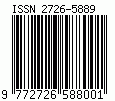The Linguistic interference between L1 and L2 in EFL Moroccan Classes: Negative transfer of Grammatical rules
Keywords:
interference of languages, L1, L2, learning process, positive transfer, negative transferAbstract
The purpose of this research is to identify the extent to which students' first language (Arabic) grammar affects their second language (English) writing. The effects of first-language interference on second-language learners have been the subject of a great deal of research. One of the most common causes of poor writing by second-language students is the introduction of words and structures from the original language into their work (Lightbown & Spada, 1999). When discussing interference, Ellis (1997) uses the term "transfer," which he defines as "the impact that the learner exercises on the learning of an L2." The goal of this study, which used a mixed-methods survey research methodology, was to investigate the impact of L1 linguistic items on the English (L2) writing of 30 students at a chosen high school in Marrakech. The study found that incorrect syntactical order was often used in the L2 writing examples. Literature reviewed for this essay reveals that Arabic and English have distinct syntactical orders and different grammatical rules. Almost the whole class was found to have employed Arabic syntax in their L2 writing, according to our analysis of the data, there is a huge interference between L1 and L2 when producing a written piece by Moroccan students.
Downloads
Downloads
Published
How to Cite
Issue
Section
License
Copyright (c) 2020 LAILA SADOUK

This work is licensed under a Creative Commons Attribution-NonCommercial 4.0 International License.















